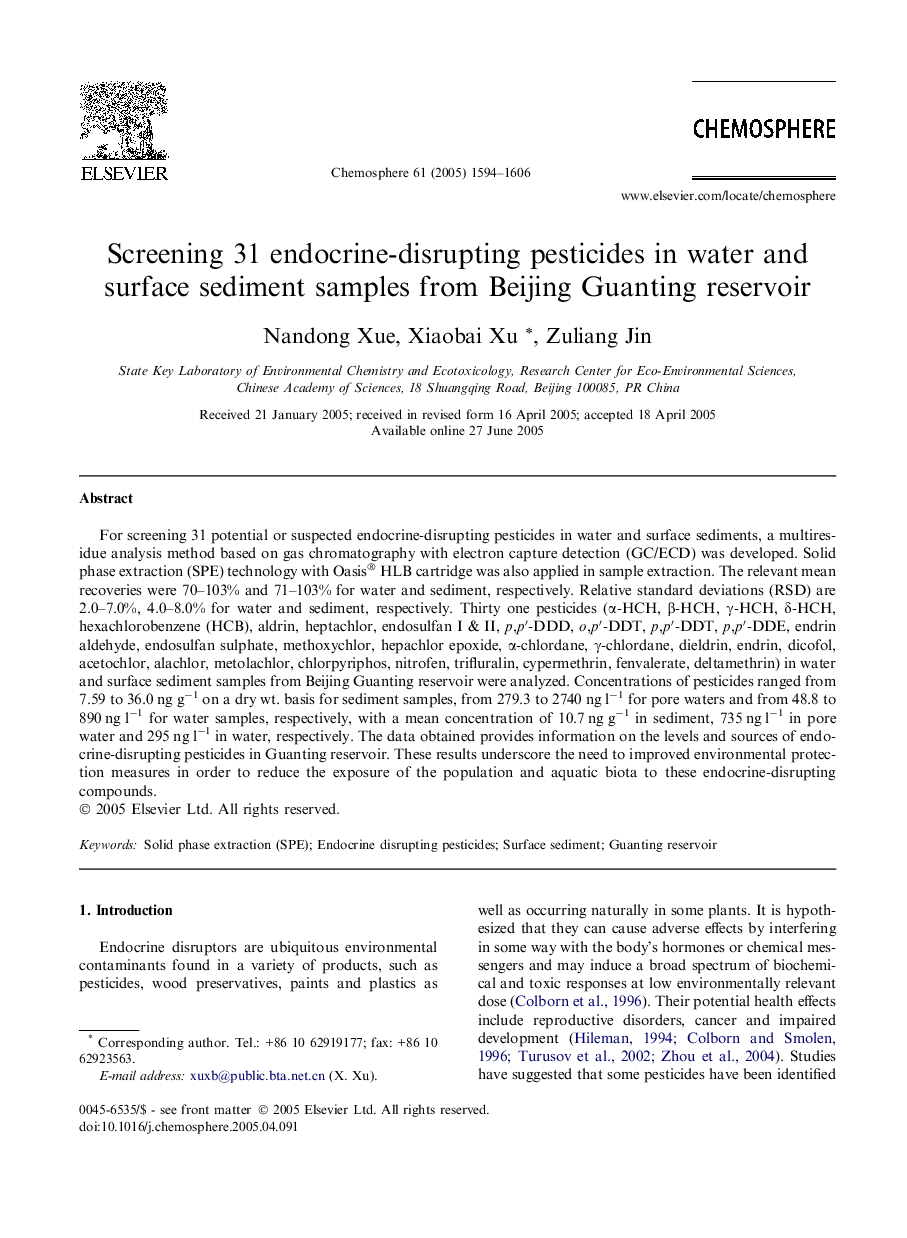| Article ID | Journal | Published Year | Pages | File Type |
|---|---|---|---|---|
| 9451502 | Chemosphere | 2005 | 13 Pages |
Abstract
For screening 31 potential or suspected endocrine-disrupting pesticides in water and surface sediments, a multiresidue analysis method based on gas chromatography with electron capture detection (GC/ECD) was developed. Solid phase extraction (SPE) technology with Oasis® HLB cartridge was also applied in sample extraction. The relevant mean recoveries were 70-103% and 71-103% for water and sediment, respectively. Relative standard deviations (RSD) are 2.0-7.0%, 4.0-8.0% for water and sediment, respectively. Thirty one pesticides (α-HCH, β-HCH, γ-HCH, δ-HCH, hexachlorobenzene (HCB), aldrin, heptachlor, endosulfan I & II, p,pâ²-DDD, o,pâ²-DDT, p,pâ²-DDT, p,pâ²-DDE, endrin aldehyde, endosulfan sulphate, methoxychlor, hepachlor epoxide, α-chlordane, γ-chlordane, dieldrin, endrin, dicofol, acetochlor, alachlor, metolachlor, chlorpyriphos, nitrofen, trifluralin, cypermethrin, fenvalerate, deltamethrin) in water and surface sediment samples from Beijing Guanting reservoir were analyzed. Concentrations of pesticides ranged from 7.59 to 36.0 ng gâ1 on a dry wt. basis for sediment samples, from 279.3 to 2740 ng lâ1 for pore waters and from 48.8 to 890 ng lâ1 for water samples, respectively, with a mean concentration of 10.7 ng gâ1 in sediment, 735 ng lâ1 in pore water and 295 ng lâ1 in water, respectively. The data obtained provides information on the levels and sources of endocrine-disrupting pesticides in Guanting reservoir. These results underscore the need to improved environmental protection measures in order to reduce the exposure of the population and aquatic biota to these endocrine-disrupting compounds.
Related Topics
Life Sciences
Environmental Science
Environmental Chemistry
Authors
Nandong Xue, Xiaobai Xu, Zuliang Jin,
